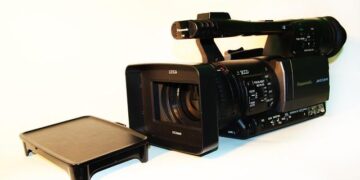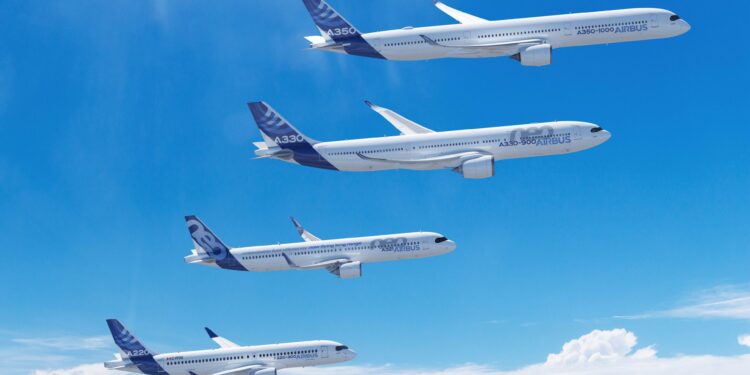Revolutionizing Autonomous Flight: Airbus Partners with Aeva for Advanced 4D LiDAR Solutions
In a groundbreaking development for the future of self-driving technology, a subsidiary of Airbus has made headlines by choosing Aeva, an innovator in sensing solutions, to provide state-of-the-art 4D LiDAR systems for an ambitious initiative. This partnership not only emphasizes the increasing significance of sophisticated perception technologies in both aviation and transportation but also illustrates the collaboration between aerospace advancements and cutting-edge sensor innovations. As the need for improved safety and operational efficiency in autonomous vehicles rises, this alliance is poised to enhance situational awareness across various sectors, including urban air mobility and advanced aircraft systems. In this article, we will explore this remarkable partnership, examining how Aeva’s 4D LiDAR technology could transform the aerospace industry.
Collaboration in Action: How Aeva’s 4D LiDAR is Transforming Airbus’s Future Projects
The alliance between Airbus and Aeva represents a pivotal moment in aerospace innovation, particularly concerning next-generation aircraft design. By incorporating Aeva’s advanced 4D LiDAR technology into its projects, Airbus aims to elevate its capabilities beyond previous limitations. The enhanced perception features provided by 4D LiDAR enable real-time environmental visualization and deeper insights into operational contexts that lead to:
- Heightened Safety: Improved detection of objects and situational awareness during both autonomous flights and piloted operations.
- Dynamic Environmental Mapping: Generation of high-resolution three-dimensional maps that refresh continuously for better navigation and obstacle avoidance.
- Simplified Design Processes: Accelerated development timelines through precise data utilization that informs design enhancements and testing methodologies.
This collaboration not only sets the stage for technological breakthroughs but also reinforces Airbus’s dedication to pioneering advancements within aviation. By harnessing the unique strengths of 4D LiDAR technology, Airbus can optimize its aircraft designs across multiple applications such as urban air transport or freight logistics. The potential uses are extensive; consider these examples:
| Application Area | Advantages |
|---|---|
| Civil Air Mobility | Paves the way for safe operations within crowded airspaces. |
| Aids precise loading/unloading processes. |
Enhancing Safety and Efficiency: The Role of Advanced LIDAR Technology in Aerospace
The evolution of the aerospace sector highlights how integrating LiDAR technology can significantly improve safety measures and operational effectiveness—an objective at the heart of the partnership between Airbus and Aeva. This collaboration seeks to bolster aircraft safety while enhancing efficiency through real-time data acquisition about surrounding environments using advanced LIDAR systems. Some notable features include:
- Real-Time Surface Analysis : Facilitates accurate navigation along with effective obstacle recognition .
- Improved Environmental Awareness : Enhances capability to monitor weather conditions as well as terrain variations .
- Greater Automation : Supports autonomous flight initiatives via reliable data streams .
The ramifications associated with adopting such innovative technologies extend far beyond mere safety improvements; they fundamentally reshape operational frameworks throughout aviation industries . With access to detailed information from four-dimensional LIDAR , planes can optimize their routes while minimizing fuel consumption , thus contributing positively towards overall performance metrics . Key advantages include :
< b >Advantage< / b > < b>Description< / b >
< strong >Fuel Efficiency< / strong > < span style = "color:#000000;" >(Enhanced insights lead smarter route planning resulting lower fuel usage.)< / span > / tr >
< strong >Safety Improvements< / strong > (Real-time hazard identification reduces risks during flight operations.)< / td /> / tr />
< strong />Cost Savings
/ tbody />
/ table />Strategies For Future Adoption: Maximizing Advantages Of Advanced LIDAR In Aviation Systems
To fully leverage all benefits offered by four-dimensional lidar tech within aviation frameworks requires comprehensive integration strategies involving multiple stakeholders including manufacturers regulatory agencies & tech developers alike! Establishing collaborative networks fosters open dialogue leading towards shared best practices tailored specifically addressing challenges faced today! Additionally cross-disciplinary partnerships among avionics engineers alongside data scientists play crucial roles ensuring effective processing utilizing generated datasets enabling timely decision-making enhancing overall operation security!
Moreover investing resources training personnel responsible maintaining these sophisticated systems remains vital! Initiatives should emphasize seamless incorporation existing protocols utilizing four-dimensional lidar datasets effectively! Organizations may also consider launching pilot programs testing applications varied contexts allowing iterative assessments regarding efficacy outcomes achieved through implementation efforts ! Below summarizes essential focus areas future integrations :
< b Focus Area < b>Description / tr /
/ head // tr /
< span style="" color="#000000;">< strong Collaboration Framework < span style="" color="#000000;">Engage stakeholders share insights develop solutions. // tr //
// Cross-disciplinary Partnerships
// Combine expertise from diverse fields optimizing collected datasets.
// Training Programs
// Equip staff necessary skills operate effectively.
// Pilot Projects
// Test applications varied environments.
/tr //tbody/
/table/
Conclusion: Key Insights on Advancements Shaping Aviation’s Future
As we navigate toward an increasingly innovative era within aerospace industries partnerships like those formed between subsidiaries under AirBus & AeVa represent critical milestones driving technological progress forward ! Their selection cutting-edge Four-Dimensional Light Detection And Ranging (Lidar) signifies substantial strides taken improving aspects related directly impacting precision accuracy reliability across numerous projects undertaken today ! Such collaborations highlight growing relevance associated modern sensing technologies shaping future landscapes transforming ways people travel skies above us all ! Stay tuned upcoming updates showcasing synergies propelling further advancements throughout entire sector!





























